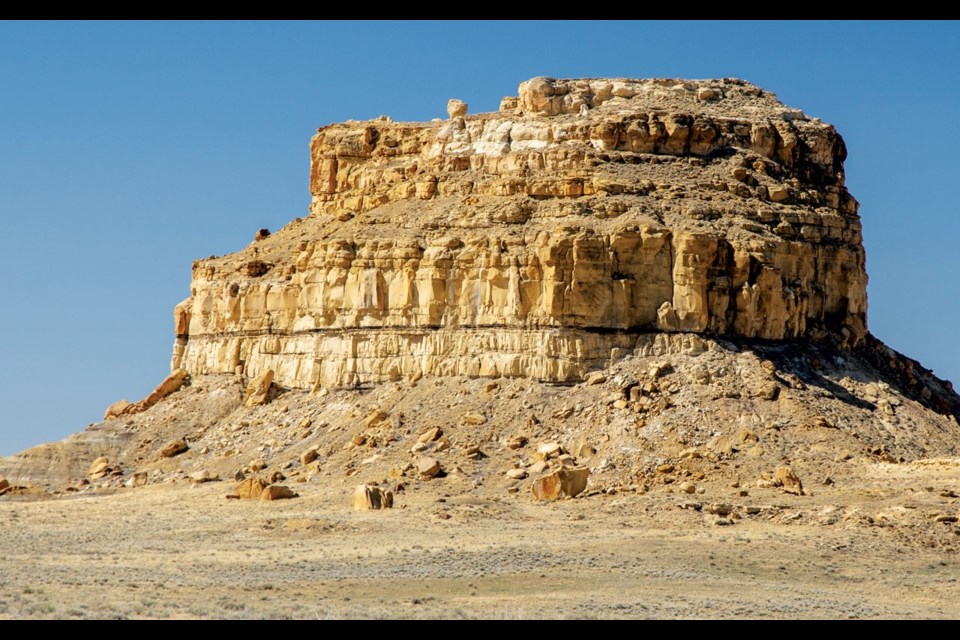My recent stay at Hotel Chaco in Albuquerque, New Mexico, was an elevated experience where ancient meets modern. Form and function intertwine seamlessly with understated luxury creating an ambiance that scintillates the five senses. Clean architectural lines honour basic Earth elements that support a palette of earthy colours.
The luxury Hotel Chaco was directly inspired by the mystique of Chaco Canyon, a UNESCO World Heritage Site and National Historical Park about a three-hour-plus drive from Albuquerque. (Some of the driving is on dirt roads of varying grades.)
The hotel has partnered with Heritage Inspirations to offer exclusive Saturday tours to this prominent site. It's a combination that is hard to beat as Heritage Inspirations furnishes the transportation, does the driving and provides a to-go breakfast, gourmet picnic lunch, water, and covers admission fees to the park. All this plus an experienced guide who masterfully shares the stories and history of Chaco Canyon makes for an educational, inspirational, and exhilarating day.
A major centre of Pueblo and Native American culture from about AD 850 to 1150, Chaco Canyon was a flourishing cultural hub between the early 900s and mid-1100s. It was the heart of Chacoan culture. However, it was abruptly abandoned for reasons still not apparent. What is known is that Chaco Canyon was once thriving; a centre for ceremonies, and an overall core for regional culture.
Located in the northwest corner of New Mexico, not far from Mesa Verde National Park and the four corners region of the Southwest (a place where New Mexico, Arizona, Utah and Colorado share borders), the high desert valley was the meeting ground of traded goods. These items included coveted cacao (chocolate), macaw feathers and copper bells from central Mexico, as well as seashells from Pacific Ocean shores. Raw turquoise was crafted and traded too, a resource from local areas, or sometimes distant mines. A total of over 644 kilometres of road networks linked outlying areas to Chaco.
My guide Bobby was well-versed in Chacoan history, adeptly pointing out the skilled masonry, techniques, and materials used in various community structures. Our starting point was at the great house of Pueblo Bonito, one of the earlier buildings planned and constructed in stages from AD 850 to 1150 by ancestral Puebloan peoples. Bobby pointed out some of the original vigas and latillas in the ceiling of one of the rooms, explaining that an estimated 225,000 trees were cut and used in the construction of the great houses and kivas. Looking around, I see no trees. "They were transported from mountains over 40 to 60 miles away (65 to 100 kilometres)," he noted.
Standing over 90 metres is Fajada Butte Solstice Marker, a standing legacy that speaks to knowledge of astronomy amongst the Chacoans and how it related to the seasons and cardinal directions. Acting as a calendar, the dagger-shaped light beams mark spring and fall equinoxes and the winter and summer solstices. However, it wasn't until 1977 that the sun dagger was recognized as a solstice marker. Unfortunately, the increased popularity and ensuing traffic threatened the stability of the marker and so the National Park Service restricted access starting in 1982. Today, only site monitoring by officials is permitted.
The glue that bound this area was its sanctity. According to the National Park Service, "people converged at Chaco because it was a sacred place, and several Navajo and Pueblo clans and ceremonies originated here." Whether drought, food scarcity, or conflict caused the Chacoans to leave the area, only continuing research will reveal the answers. What we do know is that Chaco's influence ultimately spread to places like Aztec, Mesa Verde, and the Chuska Mountains.
Today, many Southwest tribes are Chaco descendants and view Chaco Canyon as a hallowed connection to their past; a spiritual place where the past and present merge with the surrounding sacred mountains and mesas. It is a place of inspiration.
IF YOU GO
Chaco Culture National Historical Park www.nps.gov/chcu
Heritage Inspirations Tours www.heritageinspirations.com
Hotel Chaco www.hotelchaco.com




